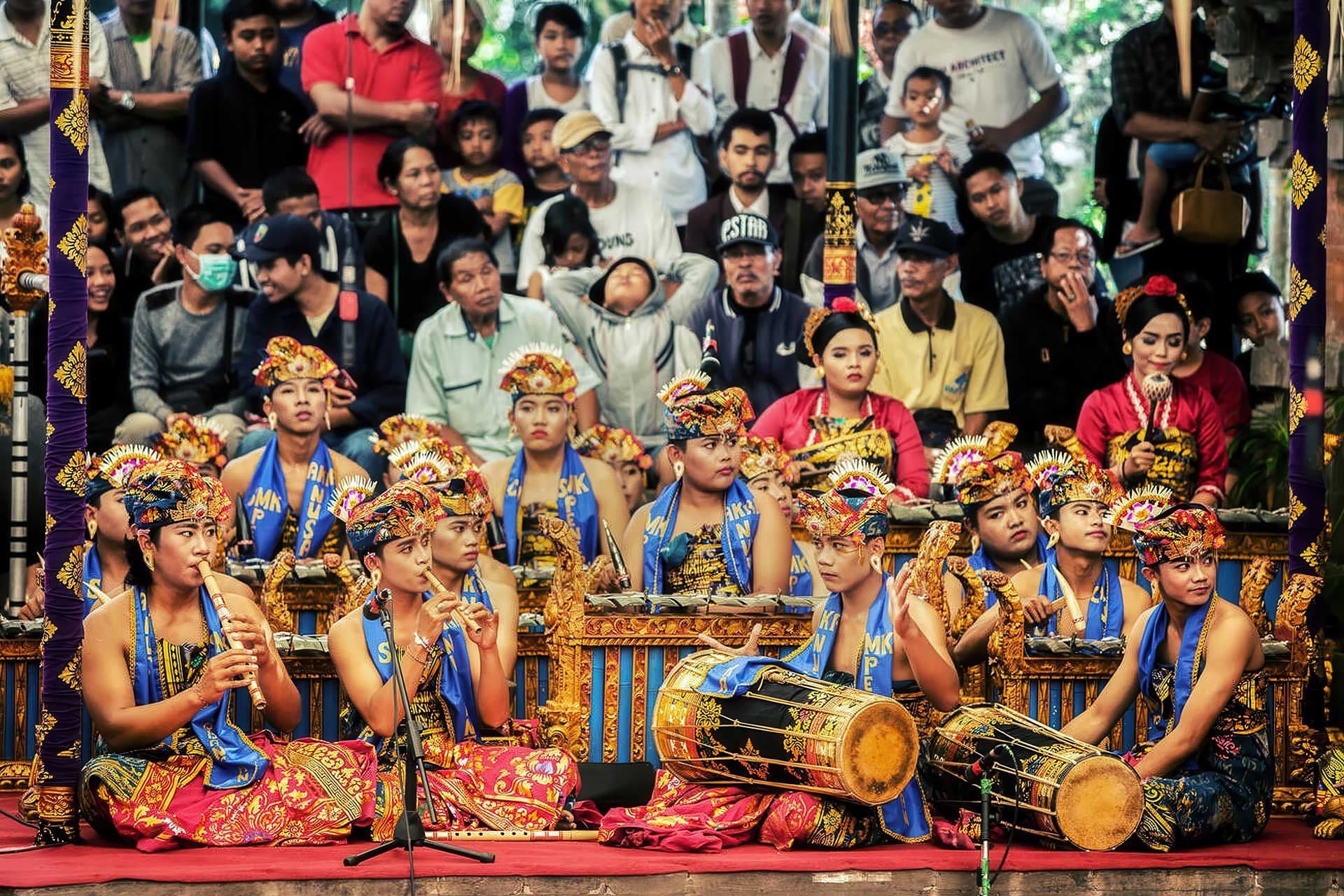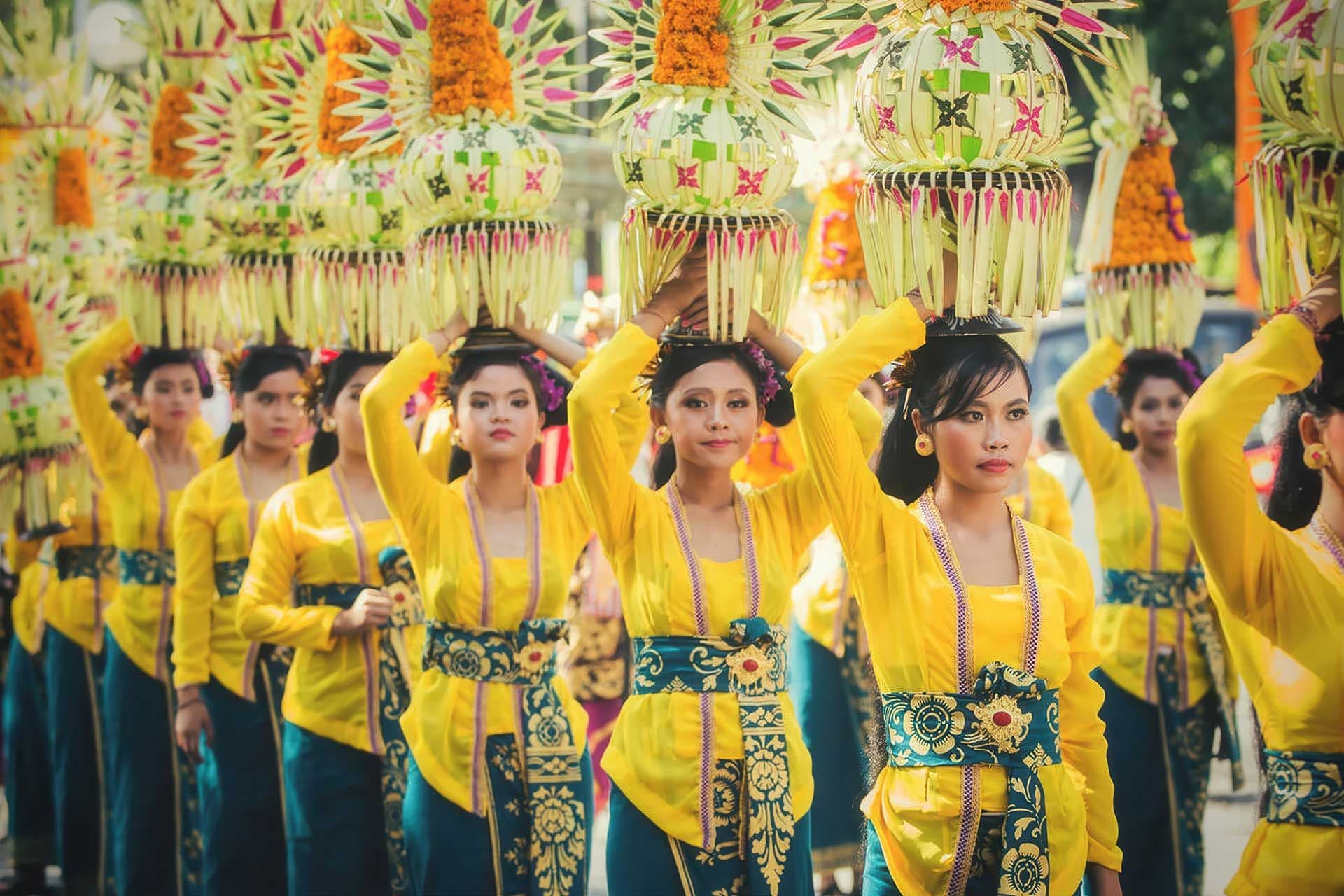Bali Unites in Arts Festival
Mahacaraka® Press
This month Bali comes alive with one of the most important cultural festivals in Indonesia: the Bali Arts Festival, or Pekan Kesenian Bali. Now in full swing across the island, this month-long celebration brings together traditional dance, music, theatre, craftsmanship, and ritual in a vibrant display of Balinese heritage. Centred in Denpasar, the festival is more than a performance, it’s a celebration of identity, creativity, and the enduring spirit of the island’s people.
First launched in 1979 by Bali’s then-governor Ida Bagus Mantra, the festival was envisioned as a way to preserve and invigorate the island’s artistic traditions in the face of modernisation and growing tourism. Over the decades, it has evolved into a comprehensive and dynamic programme featuring classical dance, traditional theatre, puppetry, music, painting, sculpture, and culinary exhibitions. All performed or presented by artists from across Bali’s regencies and beyond. This year’s event, already underway since mid-June, is once again transforming venues across the island, particularly the Taman Werdhi Budaya Art Centre in Denpasar.
More than a cultural display, the Bali Arts Festival continues to function as a living archive. Ancient dances once performed only in sacred temple ceremonies (some nearly lost) are being revived and reinterpreted with precision and reverence. Audiences are witnessing performances by master artisans, youth troupes, students, and village ensembles who have spent months preparing for this moment. These are not commercial acts staged for tourists; they are meaningful expressions of ancestral legacy, spiritual connection, and communal pride.
The festival opened with the Pawai Pembukaan, a grand procession that filled the main avenues of Denpasar with colour, rhythm, and symbolism. Dancers in ceremonial attire, musicians with traditional instruments, and performers in elaborately carved masks moved in sequence, each group representing distinct regions and traditions. It marked the beginning of a month where Bali’s inner soul is given centre stage.

What continues to set this festival apart is its inclusivity. While deeply rooted in Balinese Hindu customs, the event welcomes a range of artistic expressions from other Indonesian provinces and international participants. This year, cultural delegations from Java, Sumatra, Kalimantan, India, Japan, and several other countries have joined, creating a rich exchange that bridges local wisdom with global perspectives.
Alongside the performances, the festival is hosting academic discussions, art competitions, and exhibitions of traditional crafts. These parallel events have drawn scholars, cultural practitioners, and collectors from around the world, eager to explore the depth of Balinese art and thought. The craft market on site is especially vibrant, offering handwoven textiles, wood carvings, ceramics, silver jewellery, and batik, many made using heritage techniques passed down over generations.
The impact of the Bali Arts Festival is not confined to its venues. Across villages, children and teenagers are involved in preparations, having trained under the guidance of their elders. From gamelan rehearsals to choreography workshops, these intergenerational efforts strengthen local traditions and affirm the role of the arts in community life. For many performers, taking part is both a responsibility and an honour.
Visitors attending the festival often describe it as a deeply enriching experience. Beyond the spectacle, it provides a rare opportunity to witness the delicate balance between devotion and performance, ritual and creativity, individuality and collective expression. It invites audiences to pause, reflect, and connect with a worldview where art is inseparable from life.

For those interested in the historical dimension, many of the ongoing performances draw from classic epics such as the Ramayana and Mahabharata, as well as ancient Balinese folktales. These narratives, expressed through wayang wong, topeng, and gambuh, are imbued with philosophical insights and moral questions that remain relevant today. At the same time, contemporary themes, environmental concerns, community resilience, and mental wellbeing, are also emerging in new works presented this year, reflecting how Balinese art continues to evolve with the times.
This event is not limited to Balinese audiences. Whether you are a traveller, scholar, photographer, or someone simply curious about culture, the Bali Arts Festival offers a unique entry point into the island’s rich artistic landscape. It is a moment to witness Bali not just as a destination, but as a living cultural force. The beauty on display is not ornamental. It is purposeful, grounded in belief, and shaped by centuries of reflection and ritual.
As the 47th Bali Arts Festival continues into July, momentum is building. Daily performances and exhibitions draw enthusiastic crowds, and the energy across the city is electric. The festival’s theme this year, drawn from Balinese cosmology, encourages both introspection and creative expression, guiding the spirit of the event with philosophical depth.
To attend the Bali Arts Festival in 2025 is to witness culture in motion. It is an invitation to engage, to learn, and to feel the rhythms of an island that continues to honour its past while embracing its present. For those searching for something deeper than sightseeing, there may be no better time, or place, to experience the soul of Bali.